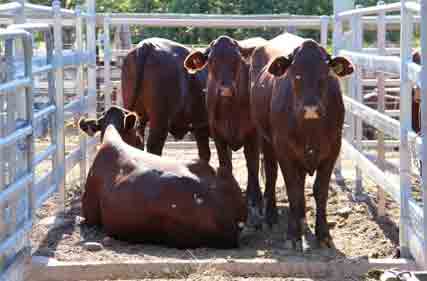 Feeding cattle can be loosely classified as supplementary feeding or full feeding. Supplementary feeding is used to make up the difference between the feed on offer and the requirements of the animals. Feeding cattle can be loosely classified as supplementary feeding or full feeding. Supplementary feeding is used to make up the difference between the feed on offer and the requirements of the animals.
Examples include energy and protein supplementation to allow animals to utilise poor quality dry standing winter pasture.
It is important to remember that supplementary feeding is only effective in the presence of plenty of dry matter in the form of pasture.
There is no point in under feeding or inappropriate feeding of animals that then continue to lose weight due to lack of adequate energy or protein.
Full hand feeding involves restricting the movement of animals (eg by containing them within a drought lot) and providing all of their nutritional needs in a ration.
This most commonly is a combination of hay and a concentrate such as grain or pellets, however there are many feed stuffs which can be utilised for feeding cattle.
High prices of grains, limited availability of many feed stuffs and high freight costs for hay means full hand feeding of cattle is extremely expensive and needs to be carefully budgeted for.
In most operations, it makes more sense to sell animals (even if that is at a loss) than to feed them for an extended period. It is also vital to consider an exit strategy and decision points for feeding programs if the budget is exhausted and there still has not been a break in season.
Selling all or some cattle might be the most financially sensible decision at this time, even with animals that may have been purchased in a higher market compared to the current one.
Sale of animals frees up capital (which can be used to restock once the season changes or feed a smaller select herd through), as well as allowing maximum opportunity for pasture recovery. Labour can be redirected to other improvements while stock numbers are reduced.
Local abattoirs are solidly booked for months, so selling cattle via saleyards, online selling platforms or privately are the best options for reducing stock numbers.
Sending cattle away to agistment is another option, however freight costs and the travel, time and labour for inspection need to be taken into consideration.
-NSW Local Land Services |

